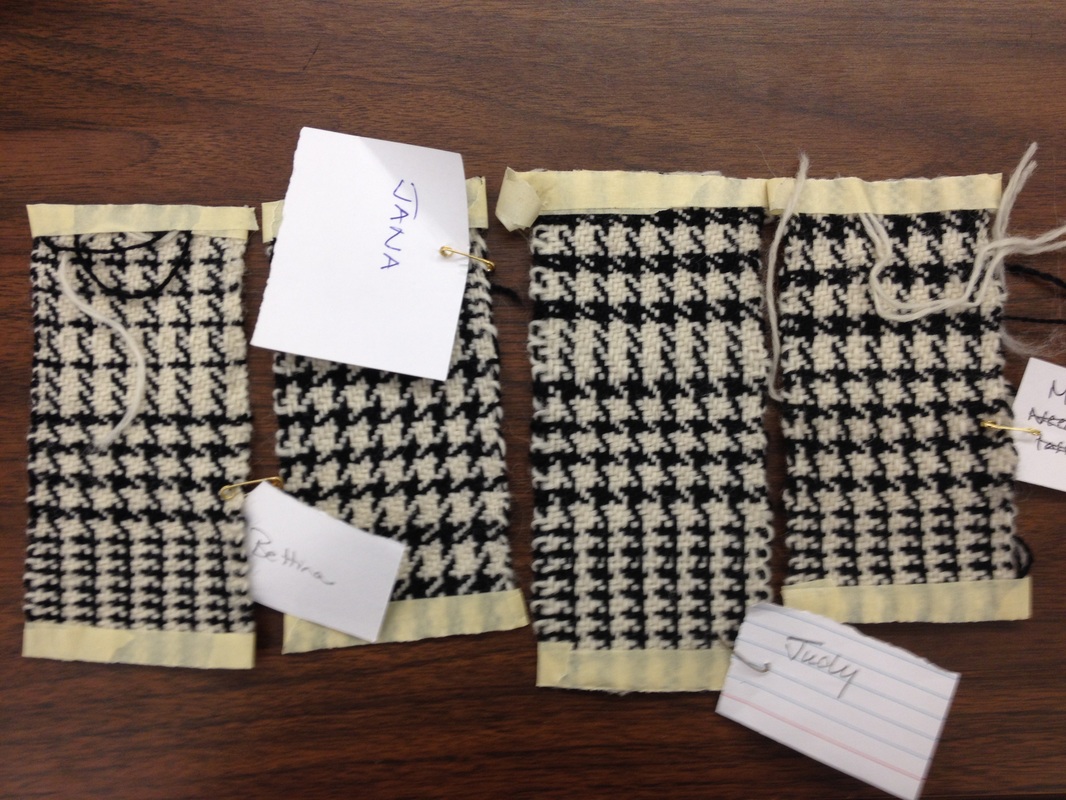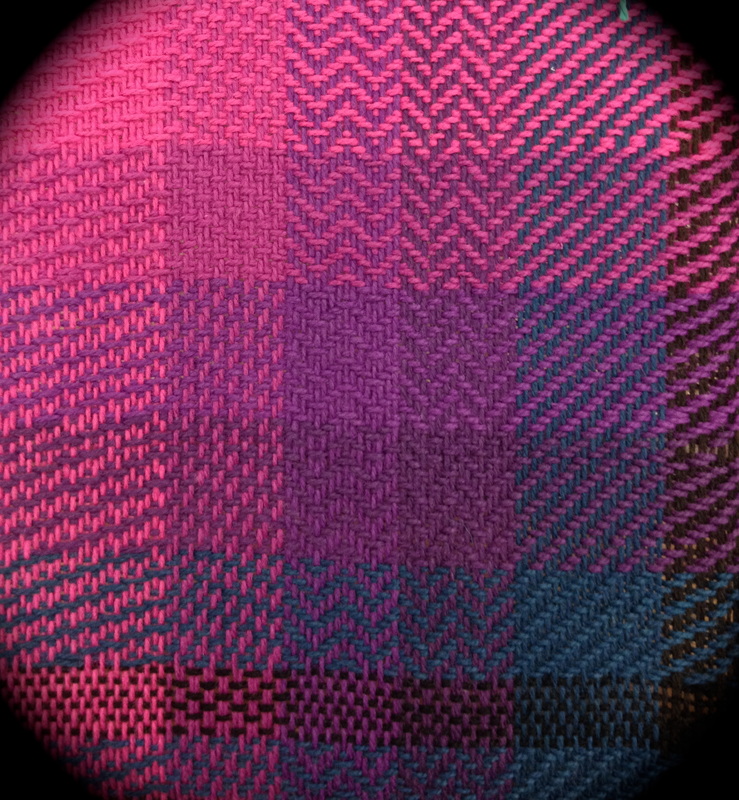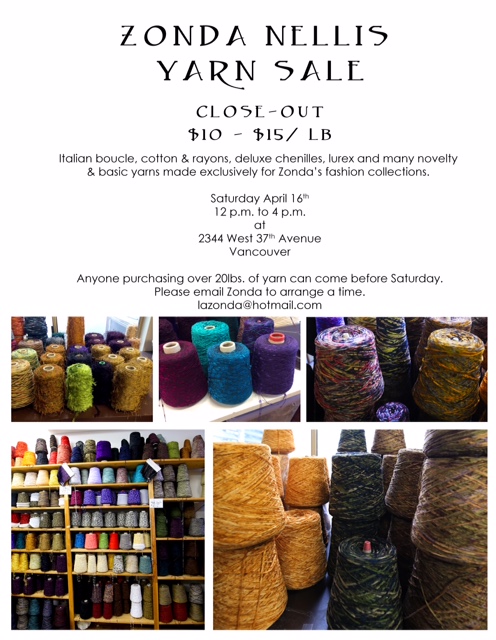|
Students in the class were asking about online resources for learning to weave. I don't know of any really, but found this one on the Craftsy site. If anyone knows of any let me know and I will post. I haven't done this one, but I might just to check it out. We are having our last class this week, wow it went fast. Here are some examples of 1st and 2nd warps, and our sample Houndstooth.
I just got a new book, Weaving Innovations from the Bateman Collection. In the forward Madelyn van der Hoogt writes some really encouraging words for beginner weavers, but also a reminder to seasoned weavers of the infinite possibilities of weaving.
"When we first start to weave, most of us are overwhelmed by all there is to learn. We are faced with an unfamiliar vocabulary - almost a complete new language - as we begin to acquire our weaving libraries. Only after many warps and much reading and re-reading (along with frustration and error) do we begin to understand how weave structures work. We learn to distinguish twill from plain weave; we discover lace weaves, summer and winter, overshot, and the versatile design potential of twills. As most weavers have done before us, we assume that the weave structures we find in hand weaving literature (representing weaving traditions from all over the world) comprised most, if not all, of what's possible. It is often even said that here is nothing "new" in weaving, that it is the combination of weave structure, yarn type, and color interaction that makes a particular cloth unique." She goes on to say how William Batemen did not stop at following patterns, or adhered to the belief that there was nothing "new" to be done in weaving. Batemen was a true innovator and he explored the basic principles of weave structure with the mind of a scientist (he was a chemist) and the heart of an educator. He left a sizeable legacy of weave samples that he made as a reference collection for weaving classes. These samples are now housed with the Seattle Weavers' Guild, and this book documents a selection of the most unique and shows the breadth of his work. Below is an example of a colour study by a student in this current class. To put things into perspective here is an image from Beverly Gordon's Textiles The Whole Story, of weavers in a Yao village in China winding their's! I am trying to find some more info on this because the mind boggles. The first questions of course is what kind of loom is that very large warp going on? Hummm.
It also reminds me of Ann Wilson's Wind up-Walking the Warp performance work, her research looked into warping practices across cultures, where walking and moving was a big piece of the process. She used these methods to invoke a state of mindfulness and focus in the performance piece. Here is a link to the PDF of all her research, its very interesting and shows many warping methods, get some inspiration to build your own! This video was sent to me by Judy in the current weaving class. It is so interesting to think about the material, environmental and aesthetic conditions that these weavers were working within. Some things seem so similar, the basic twill colour and weave for one, and the need for a functional garment. The cut of the garment however, is so very different from our fashion systems current waste in design construction. Some designers are working from a zero waste approach and certainly I think hand weavers who actually go through the process of warping and weaving (maybe even gather the fleece and spin it), you are more inclined to want to utilize every last inch!
Decided to put on a Houndstooth demo warp for the first colour and weave sample. In an interesting turn this fabric was first worn by Shepherds mostly in Scotland. It has since that time become a symbol of luxury and status, with lots of design houses over the years using it, from Dior to Steve McQueen. Here is a good link to a wee bit of history about Houndstooth. This is a four harness sample, I will do an eight harness next time, you know the spiral one.
Beginning a new 8 week Learn to Weave course tonight. I like to begin by jumping right in with winding a warp to get immediately to the experiential nature of this process. I also like to begin a discussion of how weaving and fibre itself forms the very nature of how we think about; communication, relationality, social structure - life! This thinking began with the Ancients. Above you see the Three Fates; Clotho, Lachesis, Atropos. These gals were not Gods or Muses, but were thought to have more power than either. Clotho spun the thread of life, Lachesis measured the length of thread allotted to each of us, and finally Atropos, cut the thread, deciding how each would die, and when.
Plato wrote in the Statesman that weaving could be used as a metaphor to describe the art of ruling and statesmanship. In a turn around from Homeric societal values based on Strength Beauty and Wealth, Plato's democracy aimed to create a more "just" society, which for him meant "weaving together" social virtues, without one dominating the other. Like the herdsman, the shearer, the dyer, the spinner and the weaver, all needed to work together with one aim - to make quality cloth. In the West we come from this very legacy of "thinking", so no surprise that we talk about moral fibre and social safety nets, in various states of repair and functionality. We talk about email conversations as threads, some of us live life hanging by them! The Ancient Egyptians also held cloth and the making of it close to their very thinking about life itself. They have/had the same word for weaving and being "nnt". Many indegineous cultures also use cloth making to think about life. Wade Davis in his book and research, One River of the Kogi People of the Amazon Rain Forest, says this of them, "As they pass over the earth, they weave a sacred cloak over the Great Mother, each journey like a thread, even a person’s thoughts are like threads. The act of spinning is the act of thinking. The cloth they weave and the clothes they wear become their thoughts. Everything they do is conceived of as a fabric and everything begins and ends with the loom." Here is another final colour project! We started this 8 week course talking about textile metaphors. We created a list and added as we went. Diane gave me this card and I wanted to share it with you all, as it really sums things up nicely, thanks Diane! And thanks to all of you who came each week to learn with me!
Working with colour in weaving is really exciting and the possibilities of choices to be made are endless as are the reasons for making your choices. Two students tackled the challenge of colour in two very different ways. Susan wanted to explore colour blending, so she made a narrow sampler of 5 colours and explored different ways to blend, her intention was not to have blocks or stripes. Really successful! This was a plain weave 20 epi 2/8 cotton. Louise has been explore her Scottish ancestry so I encouraged her to make her tartan, my evil plan to turn every weaver into a Tartan weaver is beginning! A really fabulous sample using a simple twill, 20 epi and again the same 2/8 cotton. It is so interesting that even though they are the same epi and the same material, they have a very different appearance. One could almost imagine that the tartan is a fine wool, how interesting the part that perception plays in our "reading" of things. Amazing 2nd projects. Only one more class to go, a wrap up, students are sad to be handing back there looms.
|
This blog is about teaching and learning about weavingArchives
May 2016
|













 RSS Feed
RSS Feed